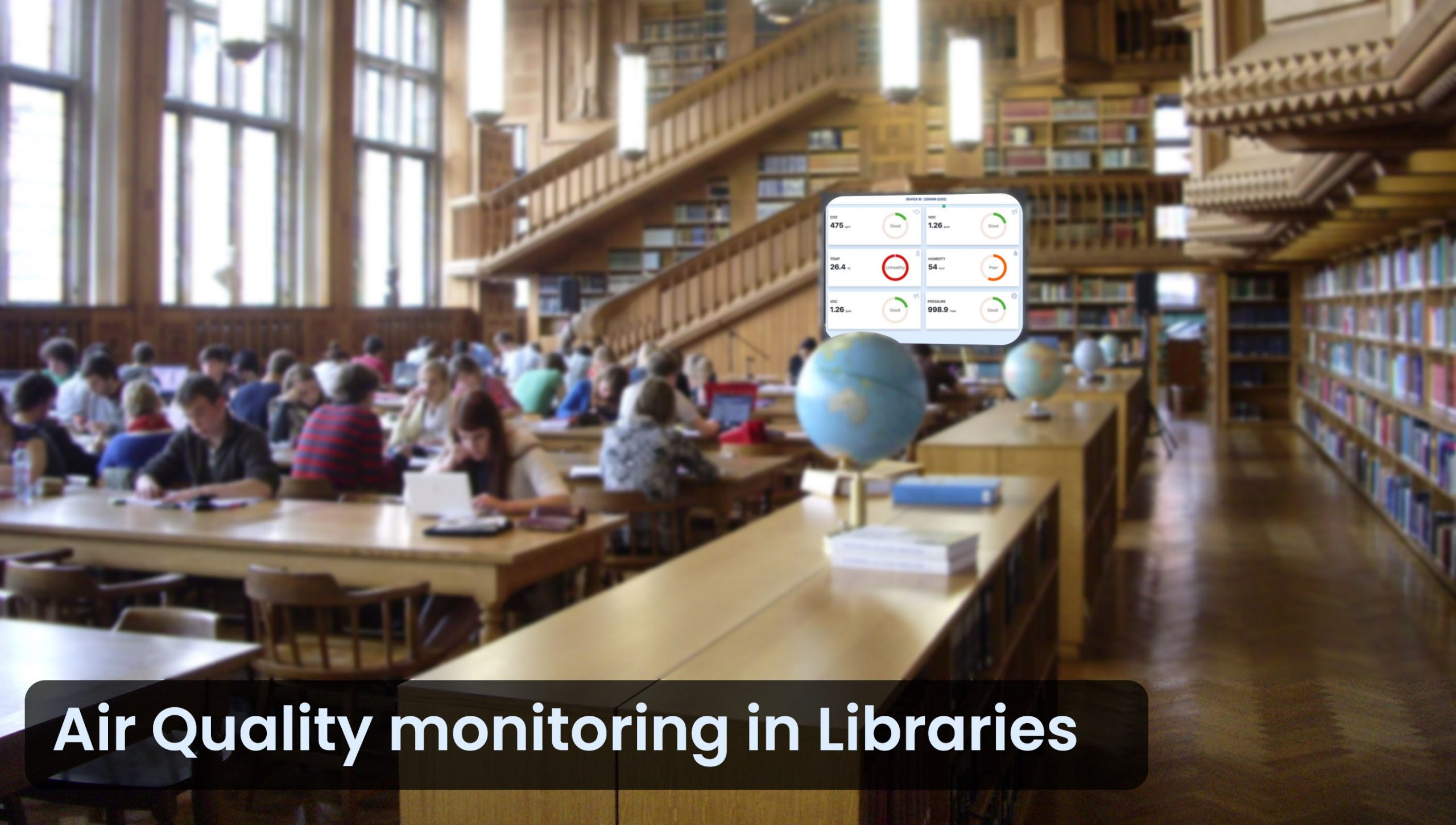Why Libraries Need Air Quality Monitoring for Protecting Books and Readers
Libraries are treasured spaces that contains invaluable books, manuscripts, and documents, serving as hubs of knowledge and learning. However, maintaining an optimal environment for both visitors and collections requires careful management of indoor air quality. Poor air quality can lead to health concerns for patrons and staff while also causing long-term damage to books and archival materials. By implementing air quality monitoring solutions, libraries can preserve their collections and ensure a comfortable environment for their visitors.
What Causes Poor Air Quality in Libraries?
Several factors contribute to poor air quality in libraries. Many libraries are housed in older buildings with outdated ventilation systems, leading to stagnant air and the accumulation of pollutants. High occupancy levels further exacerbate the issue, as large numbers of visitors contribute to increased CO2 levels and decreased air circulation. Additionally, books, carpets, and furniture trap dust, mold spores, and other allergens, negatively impacting indoor air quality. To protect books and archives, libraries often maintain controlled environments with minimal airflow, which can inadvertently lead to a buildup of pollutants. Chemical emissions from furniture, carpets, adhesives, and cleaning agents introduce volatile organic compounds (VOCs) into the air, which can cause respiratory issues over time. Furthermore, libraries located in urban areas or near busy roads may suffer from outdoor pollution seeping in through windows and ventilation systems, further degrading indoor air quality.
The Impact of Air Quality on Libraries
Several factors contribute to indoor air quality challenges in libraries, including:
- Particulate Matter (PM): Fine dust, mold spores, and pollutants can accumulate on books and shelves, accelerating paper degradation and discoloration.
- Humidity and Temperature Fluctuations: Excessive humidity encourages mold growth, while dry conditions can make paper brittle over time.
- Carbon Dioxide (CO2) Levels: High occupancy in enclosed spaces can lead to elevated CO2 levels, reducing air circulation and causing discomfort and drowsiness among visitors.
- Volatile Organic Compounds (VOCs): Chemicals from furniture, carpets, and cleaning agents can release harmful VOCs, impacting indoor air quality.
- Airborne Pollutants: Outdoor pollution entering the library through ventilation systems can introduce harmful contaminants, affecting both patrons and book collections.
Why Air Quality Monitoring is Essential for Libraries
Air quality monitoring allows libraries to proactively address environmental challenges before they cause significant damage. By continuously tracking key parameters such as CO2 levels, humidity, and particulate matter, libraries can take preventive measures to:
- Protect Books and Archival Materials: Air quality monitors play a critical role in preserving library collections by detecting and tracking fluctuations in temperature and humidity, which are essential for preventing damage to books, documents, and other valuable items. By continuously monitoring these environmental factors, librarians can take proactive measures to maintain optimal conditions and avoid degradation. Additionally, air quality monitors act as an early warning system, triggering alerts when temperature or humidity levels become too high or low, allowing corrective action to be taken swiftly. These monitors also help detect and measure harmful air pollutants, such as particulate matter, which can contribute to the deterioration of library materials over time.
- Enhance Visitor Comfort and Well-being: Maintaining optimal air quality can improve focus, reduce fatigue, and create a healthier environment for readers and staff.
- Improve Ventilation Efficiency: Identifying air quality issues allows facility managers to optimize HVAC systems and airflow, ensuring proper ventilation and cost savings.
- Comply with Preservation Standards: Many libraries and archives follow strict environmental guidelines to protect rare collections, making air quality monitoring a crucial part of their conservation strategy.
HibouAir: A Smart Air Quality Monitoring Solution for Library Environments
To effectively monitor and manage air quality in libraries, HibouAir provides an advanced, real-time air quality monitoring system. HibouAir continuously tracks key environmental parameters such as CO2, particulate matter, temperature, humidity, and VOC levels, providing actionable insights to library administrators. With its easy-to-use interface and real-time data visualization, HibouAir empowers libraries to maintain a clean, safe, and well-preserved indoor atmosphere. Data from HibouAir is easily accessible through various platforms, including mobile applications, desktop applications, and web-based solutions. Both real-time and historical data can be accessed through an intuitive user interface, allowing library staff to make informed decisions quickly and efficiently.
By implementing HibouAir, libraries can enhance the longevity of their collections, improve the well-being of visitors, and create a comfortable reading environment. Investing in air quality monitoring is not just a technological upgrade but a commitment to preserving knowledge and ensuring a healthier library experience for all.

